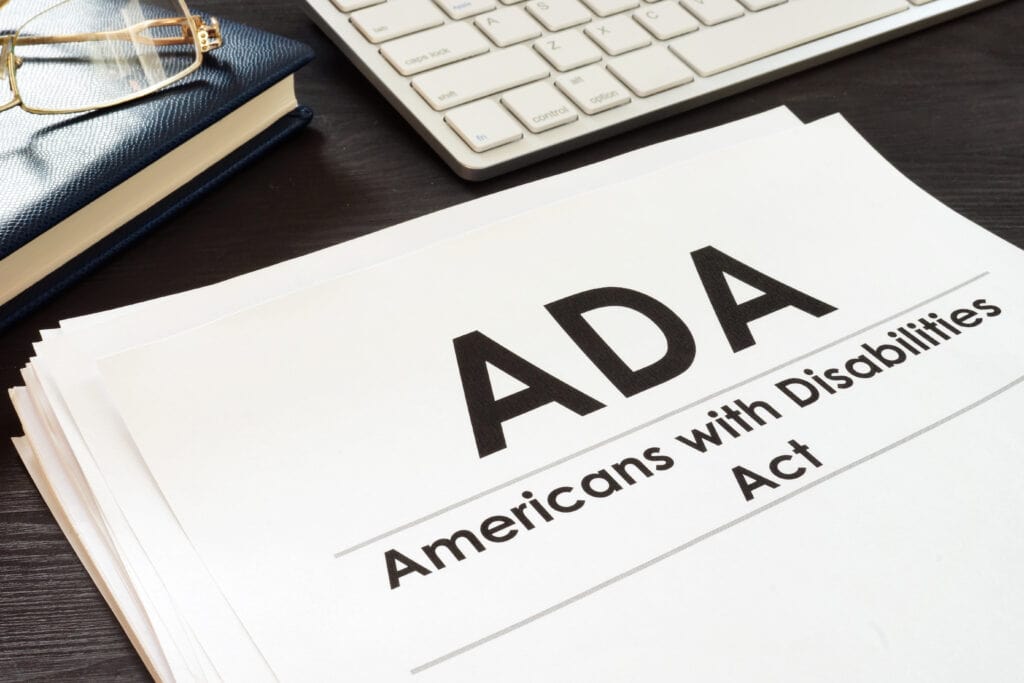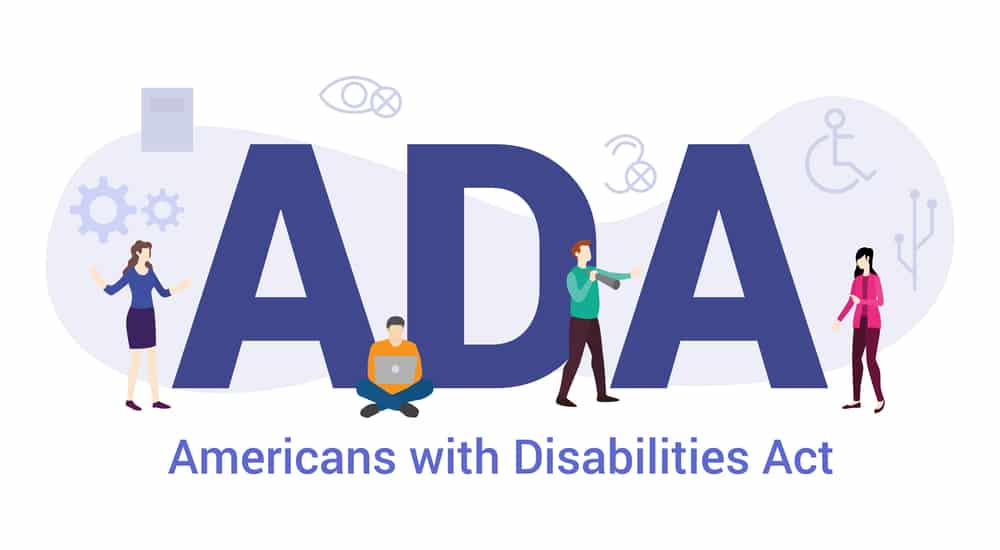Building and maintaining a website is a lot of work that can easily overwhelm even the most dedicated and hardworking business owner. This is especially an issue you’ll have to deal with if you run a startup business that doesn’t enjoy the privilege of having an extensive IT department at its disposal. Because of this, you might direct your focus toward adequately optimizing your website to boost its visibility and improve the quality of content.
However, one essential aspect you can easily forget or overlook is your website’s American with Disabilities (ADA) compliance. This isn’t a mistake you want to make, as it exposes your business to many complaints from users and possible lawsuits. And to avoid all these potential issues, here’s a guide on the steps you should follow to achieve ADA compliance.

What’s ADA Website Compliance?
US Congress passed the American Disabilities Act (ADA) in July 1990, and this bill sought to protect people with any form of disability from discrimination. This clause means that these persons could also enjoy equal inclusivity and protection. Later in 2010, the US Department of Justice enforced the Americans with Disabilities Act Standards for Accessible Design. This bill emphasized the need for information technology accessible to persons with disabilities.
The website ADA compliance regulations cover a broad area, and they include these elements:
- Text formatting
- Non-standard use of colors
- Navigation challenges
- Audio control
- Closed-caption on video
- Structure and searchable
- Alternative for interactive features
Because a business owner must ensure that their website is ADA compliant, this is where an ADA compliance checker comes in handy. Doing this safeguards your business from the following consequences of noncompliance:
- Fines can reach up to $75,000 for your first offense and $150,000 for subsequent offenses.
- Destroy your company’s reputation, which could have a massive financial effect on your business.
- Expose your business to potential lawsuits that cost your company a substantial sum.
Therefore, it’s best to ensure your website is ADA compliant to avoid any of these repercussions that’ll end up affecting your company’s profitability in the long run.
Steps To Design An ADA-Compliant Website
For your website to remain compliant with the ADA, you must follow several steps. So here’s a quick overview of each of them:
-
Assess Your Website’s Current State
You can start to design your website to become ADA compliant without first understanding what areas need to be improved. This is why you must begin by assessing your existing website. You can do it either by manually testing it using screen reader software or programs such as Lighthouse or WAVE. As you do this, you should determine whether your site satisfies these four essential qualities:
- Perception: This refers to the usability of your content and components, especially video, texts, and images.
- Operation: Every website component should be operable to every user, for instance, engaging with its features and tools and navigating your site.
- Understandable: It means making your site easy to understand for all your users.
- Robust: It’s the standard code among many web browsers.
Checking whether your website satisfies these qualities will help you identify weak spots and know how to implement necessary improvements.
-
Choose The Right Graphics
Your choice of images is another vital factor you must consider to ensure your website is ADA compliant. Ideally, you want to avoid pictures that flash over three times per second, as medical experts believe these prompt seizure attacks for users while browsing sites. The graphics also need a caption or description, which computers can read out loud to help visually impaired users.
-
Consider Typography And Alt Tags
The accessibility of your website is highly dependent on its typography. This is why you must ensure that all the website content and text on your site are easily readable. You can best realize this by selecting easily legible fonts such as Quicksand, Open Sans, or Georgia. In addition, avoid placing dark fonts on a dark background or vice versa because this strains persons with visual disabilities. You should also consider going with good color contrast.
You can also enhance everyone’s experience by including captions and alt-text for video descriptions and images. And for persons with hearing challenges, consider including an audio transcript for every audio file.
-
Make Functionality Intuitive
It’s easy not to use creative features and navigations. However, you shouldn’t forget the need to ensure that your site is easy to operate and predictable, especially for persons with disabilities. Doing this reduces the chances of errors happening during the entire process.
You can achieve this by ensuring you organize the links, functionality, and menus perfectly and clearly. The forms also need to be clearly labeled and simple to submit.
-
Make Your Website Operational
Your website should continue being accessible without using a mouse or touchscreen. One way to make your website’s functionality intuitive is by making it keyboard-friendly. This is because many disabled individuals won’t be using a pointing device such as the mouse when navigating through your website. Instead, they’ll be using a keyboard, so you must ensure your website is keyboard-friendly.
For instance, users should be able to slow down automatic slideshows or scrolling movements and play content using the keyboard. You should also ensure that persons with physical disabilities can still pause and perform video interactions with a keyboard. In addition, you should remove every video with a time limit and opt for automatic play. You must incorporate this into your website’s design to remain ADA compliant.
-
Remain Up-To-Date With ADA Changes
There are continuous changes being implemented to ensure ADA compliance with continued technological advancements. Therefore, you must keep up-to-date with the latest ADA compliance changes and quickly incorporate them when coding your web. This will help you stay ahead of the curve of your competitors in meeting ADA compliance, further boosting your site’s ranking and credibility.
Takeaway
Today’s businesses must have a website to ensure they remain competitive against their rivals. This need accelerated with current world events, allowing companies to see the need for adopting digital shopping platforms instead of face-to-face communication. But besides creating and maintaining a website, companies must also keep compliant with the ADA. This guide lets you know the steps to follow to realize this goal.



